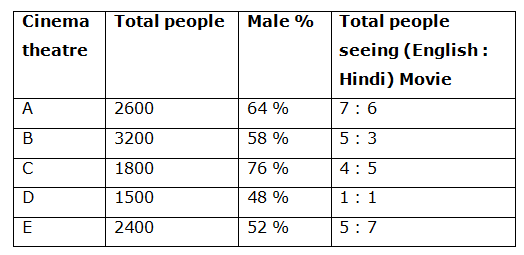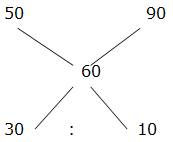SBI PO 2019 Notification will be expected soon. It is one of the most expected recruitment among the banking aspirants. Every year the exam pattern for SBI PO has been changing. Depends upon the changing of exam pattern the questions are quite harder compare to the previous year. So the questions are in high level than the candidate’s assumption.
As per the latest trend, our IBPS Guide is providing the updated New Exam Pattern Quantitative Aptitude questions for SBI PO 2019 Day 17. Our Skilled experts were mounting the questions based on the aspirant’s needs. So candidates shall start your preparation and practice on daily basis with our SBI PO pattern quantitative aptitude questions 2019 day 18. Start your effective preparation from the right beginning to get success in upcoming SBI PO 2019.
“Be not afraid of growing slowly; be afraid only of standing still”
[WpProQuiz 5327]
Click Here for SBI PO Pre 2019 High-Quality Mocks Exactly on SBI Standard
1) A bus covers the first _____ Km in 25 mins and the remaining 87 Km in one hour. Then the average speed of the bus is _____ Km/hr.
Which of the following option satisfies the given condition?
a) 32, 72
b) 44, 100
c) 32, 84
d) 36, 84
e) None of these
2) The compound interest on a certain sum for _____ year/years at 10% per annum is Rs. _____. Then the simple interest for the same sum on 2 years at 10 % per annum is Rs. 6000.
Which of the following option satisfies the given condition?
I) 2, 6300
II) 3, 9930
III) 1, 3000
a) Only I and II
b) Only II and III
c) Only I and III
d) Only II
e) All I, II and III
3) The speed of the man in still water is ______ km/hr and the rate of flow of water is 7.5 km/hr. He takes 30 hours to row to a place and come back. The distance between these two places is _______.
Which of the following option satisfies the given condition?
a) 14.5, 170
b) 12.5, 120
c) 10.5, 90
d) 13.5, 140
e) Both b and d
4) A, B and C entered into a partnership with investment in the ratio of _______ respectively. After one year, B doubled his investment. At the end of two years, they earned a profit of Rs. ______. The share of B in the profit is Rs. 30000.
Which of the following option satisfies the given condition?
I) 3: 5: 12, 90000
II) 3: 6: 7, 65000
III) 4: 5: 8, 78000
a) Only I and II
b) Only II and III
c) Only I and III
d) Only II
e) All I, II and III
5) A person covers ____ km in 6 hours. He covers some distance by bus at the average speed of 50 km/hr and the remaining distance by train at the average speed 90 km/hr. The distance covered by the train is _____ Km.
a) 480, 360
b) 420, 240
c) 360, 90
d) 450, 280
e) Both a and c
Directions (Q. 6 – 10): Study the following information carefully and answer the given questions:
The following table shows total number of people going for a movie in a different Cinema theatre and percentage of male among them and the ratio of total number of people seeing English and Hindi movie in the theatre.

Note: Only two language movies English and Hindi running in the theatres.
6) Total number of female going for a movie in theatre C is approximately what percentage of total number of male going for a movie in theatre A?
a) 26 %
b) 35 %
c) 44 %
d) 58 %
e) 65 %
7) Find the ratio between the total number people seeing English movie in theatre E to that of total number of people seeing Hindi movie in theatre C?
a) 2: 5
b) 3: 4
c) 1: 1
d) 5: 7
e) None of these
8) Find the difference between the total number of female going for a movie in theatre B and D together to that of total number of people going for a movie in theatre E?
a) 354
b) 276
c) 390
d) 428
e) None of these
9) Find the total number of people seeing English movie in theatre B, C and D together?
a) 3780
b) 3060
c) 3890
d) 3550
e) None of these
10) Total number of people going for a movie in theatre E is approximately what percentage more than total number of people going for a movie in theatre C?
a) 33 %
b) 47 %
c) 50 %
d) 66 %
e) 25 %
Answers :
1) Answer: c)
Option (a)
Average speed = Total distance ÷ Total time
Total time = (25/60) + 1 = (17/12) hours
Total distance = 32 + 87 = 119 km
Average speed = 119/(17/12)
= > 84 km/hr ≠ 72 km/hr
This doesn’t satisfy the given condition.
Option (b)
Average speed = Total distance ÷ Total time
Total time = (25/60) + 1 = (17/12) hours
Total distance = 44 + 87 = 131 km
Average speed = 131/(17/12)
= > 92.47 km/hr ≠ 100 km/hr
This doesn’t satisfy the given condition.
Option (c)
Average speed = Total distance ÷ Total time
Total time = (25/60) + 1 = (17/12) hours
Total distance = 32 + 87 = 119 km
Average speed = 119/(17/12)
= > 84 km/hr
This satisfies the given condition.
Option (d)
Average speed = Total distance ÷ Total time
Total time = (25/60) + 1 = (17/12) hours
Total distance = 36 + 87 = 123 km
Average speed = 123/(17/12)
= > 86.82 km/hr ≠ 84 km/hr
This doesn’t satisfy the given condition.
2) Answer: e)
Principle amount = (6000*100)/(10*2) = Rs. 30000
Option (I)
CI = 30000*(110/100)*(110/100) – 30000
= > 36300 – 30000 = Rs. 6300
This satisfies the given condition.
Option (II)
CI = 30000*(110/100)*(110/100)*(110/100) – 30000
= > 39930 – 30000 = Rs. 9930
This satisfies the given condition.
Option (III)
CI = 30000*(110/100) – 30000
= > 33000 – 30000 = Rs. 3000
This satisfies the given condition.
3) Answer: e)
Option (a)
Speed of man in still water = 14.5 km/hr
Speed of stream = 7.5 km/hr
Speed of upstream = 14.5 – 7.5 = 7 km/hr
Speed of downstream = 14.5 + 7.5 = 22 km/hr
According to the question,
(x/22) + (x/7) = 30
29x/(22*7) = 30
X = 159.31 km
This doesn’t satisfy the given condition.
Option (b)
Speed of man in still water = 12.5 km/hr
Speed of stream = 7.5 km/hr
Speed of upstream = 12.5 – 7.5 = 5 km/hr
Speed of downstream = 12.5 + 7.5 = 20 km/hr
According to the question,
(x/20) + (x/5) = 30
5x/20 = 30
X = 120 km
This satisfies the given condition.
Option (c)
Speed of man in still water = 10.5 km/hr
Speed of stream = 7.5 km/hr
Speed of upstream = 10.5 – 7.5 = 2.5 (or) 5/2 km/hr
Speed of downstream = 10.5 + 7.5 = 18 km/hr
According to the question,
(x/18) + (2x/5) = 30
41x/(18*5) = 30
X = 65.85 km
This doesn’t satisfy the given condition.
Option (d)
Speed of man in still water = 13.5 km/hr
Speed of stream = 7.5 km/hr
Speed of upstream = 13.5 – 7.5 = 6 km/hr
Speed of downstream = 13.5 + 7.5 = 21 km/hr
According to the question,
(x/21) + (x/6) = 30
27x/(21*6) = 30
X = 140 km
This satisfies the given condition.
4) Answer: c)
Option (I)
The share of A, B and C,
= > [3*2] : [5*1 + 10*1] : [12*2]
= > 6 : 15 : 24 = 2 : 5 : 8
5’s = 30000
1’s = 6000
Total profit = 15’s = Rs. 90000
This satisfies the given condition.
Option (II)
The share of A, B and C,
= > [3*2] : [6*1 + 12*1] : [7*2]
= > 6 : 18 : 14 = 3 : 9 : 7
9’s = 30000
1’s = 30000/9
Total profit = 19’s = (30000/9)*19 = Rs. 63333.33
This doesn’t satisfy the given condition.
Option (III)
The share of A, B and C,
= > [4*2] : [5*1 + 10*1] : [8*2]
= > 8: 15: 16
15’s = 30000
1’s = 2000
Total profit = 39’s = Rs. 78000
This satisfies the given condition.
5) Answer: e)
Option (a)
Average speed of the person= 480/6 = 80 km/hr
By applying the rule of allegation we get,

= > 1: 3
Ratio between distances covered as 1: 3
So, Distance covered by train= 480*3/4 = 360 km
This satisfies the given condition.
Option (b)
Average speed of the person= 420/6 = 70 km/hr
By applying the rule of allegation we get,

= > 1 : 1
Ratio between distances covered as 1 : 1
So, Distance covered by train= 420*1/2 = 210 km
This doesn’t satisfy the given condition.
Option (c)
Average speed of the person= 360/6 = 60 km/hr
By applying the rule of allegation we get,

= > 3: 1
Ratio between distances covered as 3: 1
So, Distance covered by train= 360*1/4 = 90 km
This satisfies the given condition.
Option (d)
Average speed of the person= 450/6 = 75 km/hr
By applying the rule of allegation we get,

= > 3: 5
Ratio between distances covered as 3: 5
So, Distance covered by train= 450*5/8 = 281.25 km
This doesn’t satisfy the given condition.
Direction (6-10) :
6) Answer: a)
Total number of female going for a movie in theatre C
= > 1800*(24/100) = 432
Total number of male going for a movie in theatre A
= > 2600*(64/100) = 1664
Required % = (432/1664)*100 = 26 %
7) Answer: c)
The total number people seeing English movie in theatre E
= > 2400*(5/12) = 1000
The total number of people seeing Hindi movie in theatre C
= > 1800*(5/9) = 1000
Required ratio = 1000: 1000 = 1: 1
8) Answer: b)
The total number of female going for a movie in theatre B and D together
= > 3200*(42/100) + 1500*(52/100)
= > 1344 + 780 = 2124
The total number of people going for a movie in theatre E = 2400
Required difference = 2400 – 2124 = 276
9) Answer: d)
The total number of people seeing English movie in theatre B, C and D together
= > 3200*(5/8) + 1800*(4/9) + 1500*(1/2)
= > 2000 + 800 + 750 = 3550
10) Answer: a)
Total number of people going for a movie in theatre E = 2400
Total number of people going for a movie in theatre C = 1800
Required % = [(2400 – 1800)/1800]*100 = 33 %





